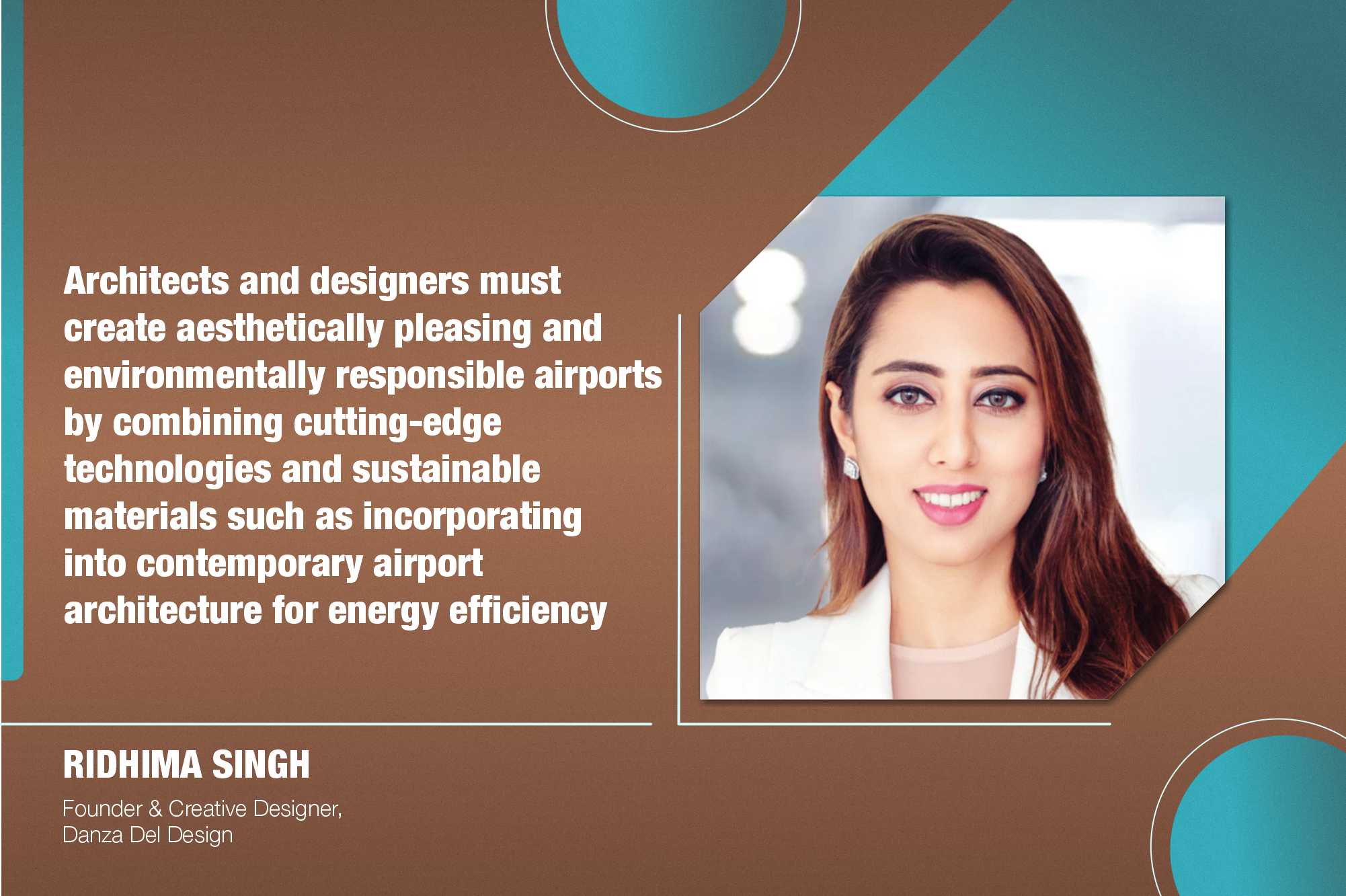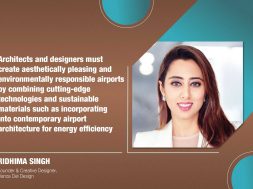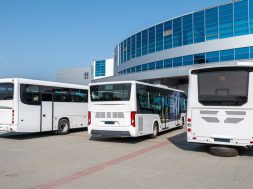Airports are more than just transit points

“Architects and designers must create aesthetically pleasing and environmentally responsible airports by combining cutting-edge technologies and sustainable materials such as incorporating into contemporary airport architecture for energy efficiency.” Ridhima Singh, Founder and Creative Designer at Danza Del Design
Incorporating local culture and art, utilising energy-efficient systems, and leveraging cutting-edge technologies are essential strategies in modern airport architecture. This interaction explores the key design philosophies and sustainable practices transforming airports into dynamic and environmentally conscious spaces.
What guiding principles or design philosophies do you prioritise when conceptualising airport projects, and how do these principles shape the overall architecture?
Designing airports is quite challenging, as it involves meeting various sector needs. We must focus on principles like passenger experience, sustainability, and technology that can set an airport apart. For instance, creating a positive passenger experience is crucial. By including plenty of amenities and ensuring easy accessibility, an airport can greatly enhance the travel experience. Adding local culture and art elements can make the airport a memorable part of the journey. Additionally, sustainability is key in modern airport design. Using energy-efficient systems and sustainable materials helps reduce environmental impact.
How do you leverage technological advancements and innovation to enhance airport infrastructure’s functionality and aesthetics?
Today’s airports are more than just transit points; they’re complex ecosystems that must operate smoothly and look great. Technology plays a huge role in this. Tools like Building Information Modeling (BIM) and virtual reality help visualise and plan airport spaces effectively, allowing for real-time adjustments and better collaboration. Digital displays add a touch of excitement to the environment. Technology also boosts energy efficiency—think solar panels and advanced HVAC systems. These innovations not only enhance functionality but also align with global environmental goals.

In your experience, how do you achieve a balance between architectural aesthetics and airports’ practical operational needs?
Creating a pleasant travel experience involves balancing design with practical needs. For example, using window film can improve aesthetics while adhering to security and privacy regulations. Natural light and ventilation play a big role here, too. Large windows and skylights brighten the space and reduce artificial lighting, while proper ventilation ensures comfort and air quality. Incorporating advanced technologies, like automated check-in kiosks and smart security systems, can streamline operations and boost passenger convenience.
What sustainable design strategies do you incorporate into airport projects to minimise environmental impact and promote energy efficiency?
Sustainable design strategies are crucial for reducing environmental impact. Choosing sustainable building materials helps lessen the need for virgin resources. Airports can opt for bio-based composites and recycled steel or glass to enhance environmental friendliness and structural integrity. Green roofing materials can cut down on heating and cooling needs, while native plants in landscaping reduce irrigation and maintenance requirements. These choices improve air quality and provide natural insulation for the buildings.
For more details, Visit : https://danzadeldesigns.com/
Cookie Consent
We use cookies to personalize your experience. By continuing to visit this website you agree to our Terms & Conditions, Privacy Policy and Cookie Policy.










